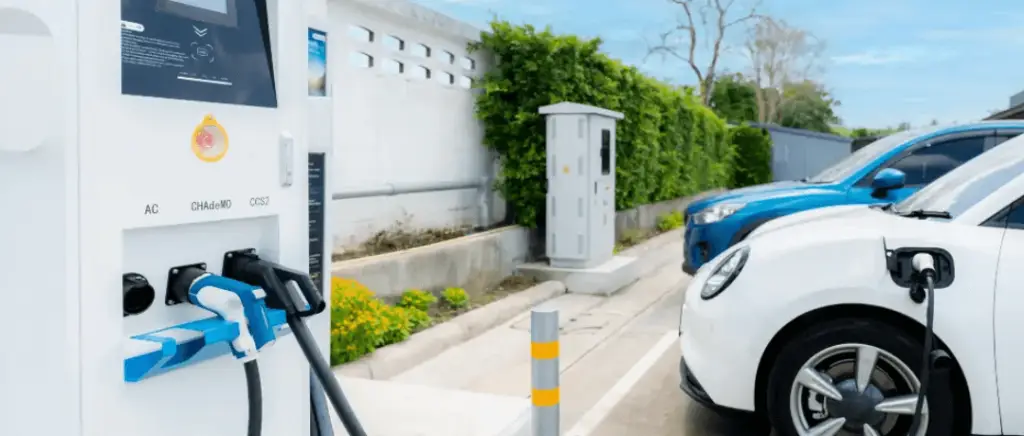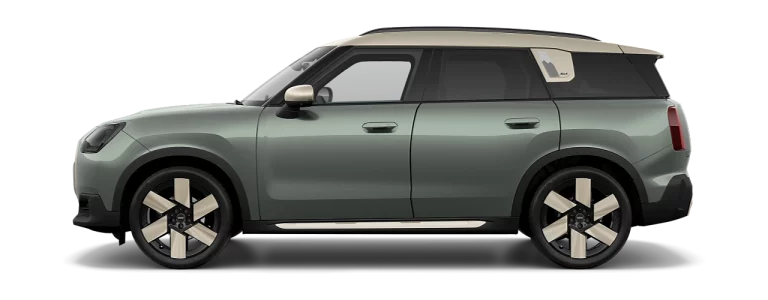Monday to Friday
9am - 12.30pm - 2pm - 7pm
Assessing your company's recharging needs
Survey your employees
To anticipate the need for charging points in your workplace, it's crucial to start with an internal survey. Asking your employees about their electric vehicle (EV) habits and plans will give you concrete data on current and future demand. This will help you to size your recharging infrastructure.
When interviewing your employees, target questions such as :
- Do you own an electric vehicle?
- Do you plan to acquire one in the next two to three years?
- Would you like to be able to recharge your car at work?
This proactive approach will give you a better understanding of their expectations. According to recent studies, many employees see access to charging points as an important retention factor. In fact, a company that offers on-site recharging can considerably reduce "range anxiety" (anxiety linked to the size of the vehicle).autonomy), one of the main reasons holding back the adoption of electric cars.
Feedback from your teams is essential, as it will help you not only to quantify the number of charging points needed, but also to determine their ideal location. For example, if several employees already own electric vehicles, you could consider a faster installation to meet their immediate needs.
As a leader in the field of charging stations and electric mobility for businesses, we know that this investigation stage is key to ensuring that your investment is profitable and meets user expectations. By doing so, you optimise costs while reinforcing your commitment to the sustainable electrification of your fleet and that of your employees.
Estimating future changes in requirements
The electrification of company fleets is growing exponentially, and it's vital to anticipate this development to better meet future needs in terms of electric vehicle charging. Indeed, forecasts indicate that by 2030, 50% of new cars sold in Europe will be electric. As a leader in electric vehicle charging solutions, we know that this transition needs to be carefully planned to meet the growing demands of your employees.
To anticipate future needs, it is advisable to plan for an increase of 5 to 10 % in the number of employees using electric vehicles over the next five years. This means that, as well as meeting current demand, it is essential to slightly oversize your infrastructure to avoid additional work in the medium term. What's more, companies at the forefront of the energy transition, such as yours, need to bear in mind that the law on the electrification of fleets is imposing more and more constraints, particularly on company vehicles.
In addition to company cars, many employees are considering switching to an electric vehicle, provided they have access to a charging point at work. By incorporating this dynamic into your business plan for the installation of charging stations, you are positioning yourself not only as an employer concerned about the well-being of your employees, but also as a visionary company ready to support the energy transition.
Finally, to be truly effective, it is advisable to install charging points capable of evolving with fast-charging technologies, which will become increasingly popular in the years to come. This will enable your infrastructure to remain efficient and competitive in the face of future innovations in the electric sector.
Also read → All you need to know about maintaining charging points on your premises
Choosing the right charging points
Compare terminal types: AC vs DC
When you're considering installing charging points in your business, it's essential to understand the difference between AC (alternating current) and DC (direct current). These two technologies offer distinct advantages, and choosing the one that's right for you depends on the specific needs of your employees, your company's budget and the charging time available.
AC charging points: for daily recharging at work
AC charging points, also known as slow or semi-fast charging points, are powered by alternating current (the same electricity used in household sockets). They are generally cheaper to install and ideal for longer recharges, such as when vehicles are parked for several hours, for example during the working day.
- Power : between 7.4 kW and 22 kW
- Recharge time : for a car with a battery 40 kWh, it takes around 4 to 8 hours to fully recharge.
- Ideal for : employees who stay in the office all day or make regular short-distance journeys.
- Cost : Less expensive than DC terminals, the installation of an AC terminal generally costs between 1,000 and 2,000 euros.
DC terminals: for fast, efficient recharging
The DC terminals, often called fast-charging stationsThese convert alternating current into direct current before sending it to the battery, enabling much faster recharging. They are particularly useful in environments where vehicles turn over quickly, such as for visitors or company vehicles that need to be available quickly.
- Power : between 50 kW and 350 kW
- Recharge time : With a 50 kW terminal, it is possible to recharge 80 % of a vehicle's battery in 30 minutes.
- Ideal for : company vehicles, short-term visitors or fleets requiring rapid recharging.
- Cost : More expensive than AC terminals, DC terminals can cost between €15,000 and €50,000 depending on power and installation.
| Bornes AC (Courant Alternatif) | Bornes DC (Courant Continu) | |
|---|---|---|
|
Simultaneous recharging capacity
|
Can charge several vehicles with a shared charging point
|
Recharges one vehicle at a time at full power
|
|
Impact on electrical infrastructure
|
Requires standard electrical capacity
|
Requires significant network upgrades
|
|
Ideal frequency of use
|
Daily use for long-stay employees
|
Intensive use for fast turnarounds (visitors or fleets)
|
|
Compatibility with different vehicles
|
Compatible with most vehicles, in particular via Type 2
|
Compatible with all modern vehicles, including long-range EVs
|
|
Maintenance and durability
|
Less maintenance required thanks to simple technology
|
More complex and costly maintenance due to high power levels
|
|
Possibility of network integration
|
Easy to integrate with building energy management systems (EMS)
|
Requires advanced management of charge distribution (smart charging)
|
|
Example of a brand
|
EVBox BusinessLine AC
|
EVBox Troniq Modular or Total Energy solutions
|
Terminals AC offer a cost-effective and versatile solution for everyday use, while the DC are designed for environments requiring rapid recharging. We can help you choose the equipment best suited to your specific needs.
Investing in terminals tailored to your business
Choosing the right charging points is a strategic decision for any business that wants to make a commitment to the energy transition and encourage the adoption of electric vehicles (EVs). It's not just a question of installing charging points, but of selecting those that meet the specific needs of your business, your employees and possibly your customers.
Adapting the type of terminal to your activity
To make the right choice, it's crucial to assess the frequency and duration of recharging. If your employees use their vehicles for daily journeys and leave them parked for long periods (6 to 8 hours), charging stations will be the ideal solution. AC (alternating current)as theEVBox BusinessLineare ideal. They are less costly to install and allow gradual recharging to match working hours. This type of charging point is perfectly suited to companies with a large number of employees. company car fleets or employees who spend all day in the office.
For companies with fast-moving vehicles, such as delivery fleets or visitors who are only on site for a short time, the kiosks can be used to DC (direct current) are more suitable. These terminals, such as theEVBox Troniq ModularThey allow rapid recharging, considerably reducing vehicle downtime. They are more expensive to install, but offer greater flexibility and meet the needs of businesses with a high frequency of use or rapid recharging requirements.
For example, for a service company with employees who park for long periods, opt for AC terminals. These solutions are cost-effective and meet the day-to-day needs of employees. On the other hand, delivery companies requiring fast turnaround times should consider DC charging stations to reduce recharging time and maximise vehicle availability.
Preparing and installing the terminals in your company
Anticipating infrastructure works
Installing electric vehicle (EV) charging points in your business requires careful planning of the infrastructure work. It's not as simple as plugging a charging point into a standard socket; adjustments need to be made to the power supply, cabling and energy management systems. To ensure an efficient installation, it is essential to anticipate this work to minimise disruption and additional costs.
Assessing the site's electrical capacity
Before any installation, you need to check that your building has sufficient electrical capacity to support the addition of charging points. Charging points, particularly those in direct current (DC)These can consume a significant amount of energy. If several terminals are to be installed, it is often necessary to upgrade the electrical installation or add transformers.
Working with a certified service provider
Charging stations must be installed by an approved IRVE (Infrastructure de Recharge pour Véhicules Électriques) installer. A qualified service provider can carry out a detailed analysis of the site, taking into account the location of the charging points, access to the electricity network and current regulations. This helps to optimise costs and avoid unpleasant surprises once the work has begun.
Optimising costs with existing infrastructure
To minimise costs, you can use existing infrastructure. For example, if your car park is equipped with electrical ducts or conduits This can simplify installation and reduce the cost of civil engineering work.
Our tips for efficient installation
- Plan ahead In addition, you should plan for a scalable infrastructure to avoid having to redo the work in a few years' time.
- Prioritise strategic locationsPlace the terminals in areas that are accessible to your employees and customers.
- Integrate renewable energy solutions
Optimise installation and running costs
Investing in electric vehicle (EV) charging points is a strategic move that can be optimised to minimise costs while maximising long-term benefits. As a pioneering company in the transition to electric fleets and recharging solutions, you can take advantage of a number of levers to reduce installation and running costs.
Take advantage of Beev's expertise and make your bollard installation project easier.
Reduce installation costs with financial assistance
The initial cost of installing a charging point can vary between €1,000 and €50,000, depending on the type of point (AC or DC) and the complexity of the work required. However, a number of support schemes are available to help finance this infrastructure. For example, the Advenir Bonusmanaged by AVERE-France, covers up to 25 % of cost excluding tax of the installation for terminals reserved for employees, with a ceiling of 750 per terminal. Local subsidies may also be available, as in some French regions, where grants can amount to up to 1,500 per terminal.
Optimising energy management with smart charging
Another way of limiting long-term costs is tooptimising the use of terminals. Thanks to the smart chargingWith this technology, you can adapt vehicle charging to times when the cost of electricity is lowest (generally during off-peak hours). This technology also makes it possible to distribute power between several vehicles, avoiding peaks in consumption that could lead to additional costs.
Companies that opt for smart terminals can save up to 30 % on their energy costs reducing peak costs and optimising load sharing. This approach also avoids costly upgrades to the electricity network by effectively managing power demand.
Minimising operational costs with renewable energy
For a company concerned about its environmental impact, the integration of renewable energy sourcesSolar energy, such as solar panels, can also offer significant savings. For example, the installation of shading systems photovoltaic above the parking spaces enables electricity to be generated directly on site, reducing dependence on external energy suppliers and the associated costs.
Also read → Top 10 best charging stations in 2024
Conclusion
Installing charging stations in your workplace is therefore a key step in preparing your company for a more sustainable future. As well as meeting the growing need for electric vehicles, this project will enhance your image as a responsible and innovative player. By following this practical advice, assessing needs, choosing the right charging points and optimising installation costs, you can ensure a smooth transition to electric mobility while maximising the return on your investment.
If you would like to find out more about the tax credit for in-car charging points 2024For more information, see our article on this subject.
































